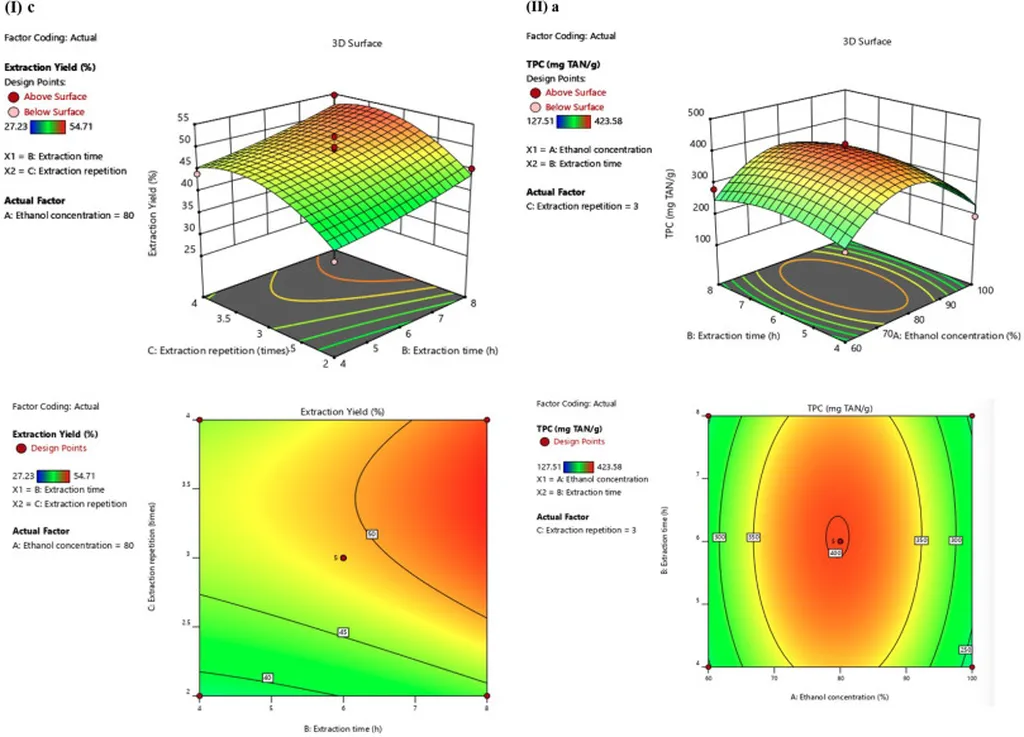In the quest to enhance nitrogen utilization efficiency (NUE) in dairy cows, researchers have turned to an unexpected ally: red sorghum. A recent study published in the *Journal of Dairy Science* (translated as *Journal of Dairy Science*) has revealed that phytochemical extracts from the leaves and stem of red sorghum (Sorghum bicolor, L. Moench) could significantly improve in vitro fermentation by modulating rumen protozoa. This breakthrough research, led by R. Yi from the State Key Laboratory of Animal Nutrition and Feeding at the Chinese Academy of Agricultural Sciences and University College Dublin, offers promising insights into the future of dairy farming and the broader agricultural sector.
The study focused on optimizing the extraction process of phytochemicals from red sorghum leaves and stems (RSLS) to maximize yields and bioactive compound content. Using a Box-Behnken design, the researchers identified the optimal conditions for extraction: 80% ethanol, a 6-hour extraction time, repeated three times. This method yielded a 48% extraction rate, with total phenolic content (TPC) levels of 400 mg tannic acid per gram and total flavonoid content (TFC) at 120 mg quercetin per gram.
The crude extracts (CE) obtained under these conditions were then tested for their effects on in situ dry matter degradation (DMD) and antiprotozoal activity. The results were striking. Compared to the control group, the CE decreased total protozoa and Entodinium populations by 47.0% and 49.0%, respectively, and reduced ammonia-nitrogen (NH3-N) levels by 31.2%. Simultaneously, microbial crude protein (CP) and in vitro DMD increased by 66.8% and 24.3%, respectively. “These findings suggest that the phytochemicals in red sorghum can significantly alter the rumen environment, enhancing nitrogen utilization and improving fermentation efficiency,” noted R. Yi.
The study further fractionated the CE using petroleum ether, ethyl acetate, n-butanol, and aqueous solutions to assess their antiprotozoal activities. All fractions showed a reduction in total protozoa, Entodinium, and NH3-N levels compared to the control group, with the aqueous fraction being the most effective.
The implications of this research are far-reaching. By improving NUE, dairy farmers could reduce the need for synthetic nitrogen supplements, leading to cost savings and a smaller environmental footprint. “This research opens up new avenues for sustainable dairy farming practices,” said R. Yi. “The potential to modulate rumen protozoa with natural plant extracts could revolutionize how we approach animal nutrition and fermentation processes.”
Future studies will aim to elucidate the chemical structures of the compounds responsible for these effects, paving the way for targeted therapeutic applications. As the agricultural sector continues to seek innovative solutions to enhance productivity and sustainability, the findings from this study offer a promising step forward. Published in the *Journal of Dairy Science*, this research underscores the importance of integrating natural phytochemicals into modern agricultural practices, potentially reshaping the future of dairy farming and beyond.

